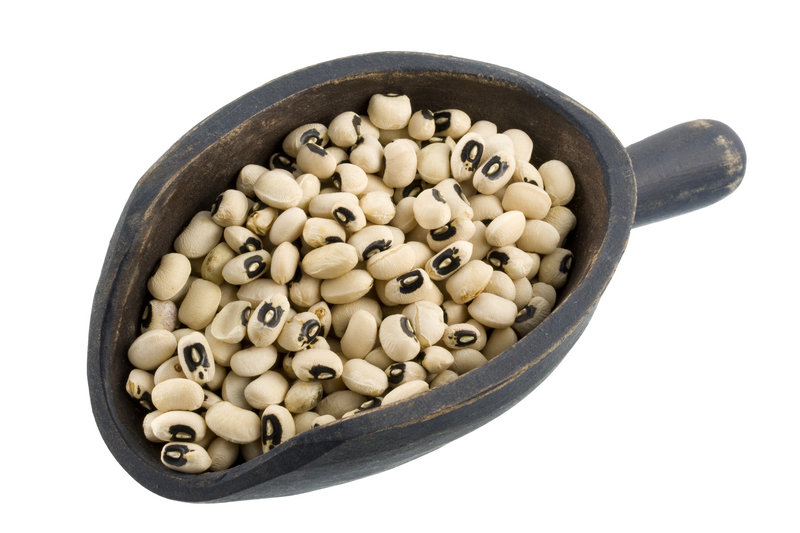If you’re thinking you might want lobster for dinner on New Year’s Day, maybe you’d better think twice.
Eating lobster on New Year’s, apparently, is bad luck.
Why? Because lobsters can crawl backwards.
“That is a symbol of going back to where you’ve been, instead of forward to where you’re going,” said Beth Kozemchak, a chef/instructor at the Stonewall Kitchen Cooking School in York who teaches a class on foods that bring luck.
“It’s the same with chickens because when they scratch, they scratch backwards,” she said. “That’s looking at the past instead of looking forward to the future.”
New Year’s Day has always been associated with lucky, and sometimes unlucky, foods. Eat a “lucky food” — say, black-eyed peas — and 2012 is sure to bring you happiness and prosperity, or so the tradition goes.
And this tradition crosses cultural boundaries, though it may be expressed in different ways. Leafy greens, for example, are considered lucky because of their resemblance to money.
Some Southerners add collards to their black-eyed peas at the new year, while in Germany, people eat cabbage in the form of sauerkraut. Danes prefer kale served with sugar and cinnamon, but Italians throw it into a stew with their lucky beans and sausage.
Here’s a sampling of lucky foods from around the world and what they symbolize:
BLACK-EYED PEAS: During the Civil War, Sherman’s troops marched through the South, taking what food they could and destroying the rest. They left behind the field peas, considering them food fit only for animals.
Black-eyed peas became a Southern staple after the starving citizens of Vicksburg, Miss., resorted to eating them to survive. From then on, they were considered lucky, and today many Southerners eat them on New Year’s Day cooked with a little ham hock and collards, and a bottle of hot sauce on hand to spice things up.
“In other cultures in Europe, it’s used because they think it resembles a coin, so that means money,” Kozemchak said. “Italians eat sausage and beans and greens on New Year’s, and the Germans do split-pea soup a lot.”
As long as it’s some kind of legume, in other words, you’re good to go.
PORK: Pork is another food that’s considered lucky in a lot of cultures.
“Pigs, they smell the ground and they move forward,” Kozemchak said. “It’s the movement of the pig when it’s alive that makes it lucky.”
Suckling pig is a popular New Year’s food in Cuba, Hungary, Portugal and Austria. “A lot of countries do a suckling pig, a whole pig,” Kozemchak said. “The Germans (prefer) sausage, but it’s the same theory.”
Kozemchak said the fattiness of the pork is also a symbol of richness.
Austrians make small pigs out of marzipan to put on the table with their suckling pig.
“When we lived in Germany, that was a big thing,” Kozemchak said. “Those are symbols of good luck, and everybody has those at the beginning of the New Year.”
Pork, of course, can be combined with some other lucky foods, perhaps for double the good fortune. It’s a wonderful flavoring in a pot of greens or peas.
CAKES: New Year’s cakes are popular all over the world, whether they are traditional cakes or doughnut-like pastries.
The cakes often have some kind of trinket baked into them. The person who receives the slice with the hidden surprise will have good luck in the coming year.
Kozemchak will be making a Greek cake for her class that contains a coin. The father of the family cuts the cake, and the first slice is set aside for St. Basil, the patron saint of the poor and unfortunate. The rest of the slices are served according to age, starting with the oldest person at the table.
GRAPES: In Spain, its popular to eat a dozen grapes at the stroke of midnight on New Year’s Eve, one for each chime of the clock.
The tradition dates from the turn of the 20th century, when there was a surplus of grapes and growers thought of this as a clever way to rid their vineyards of the surplus.
Today, lots of Spanish-speaking nations carry on the tradition, including Cuba, Mexico and several South American countries.
“The theory is that each grape represents a month of the coming year, and so if by chance you eat one grape that might be kind of sour, that might not be your best month of the year,” Kozemchak said. “And in Peru, they actually eat 13, because they think you need one more to make sure.”
Staff Writer Meredith Goad can be contacted at 791-6332 or at mgoad@pressherald.com
Twitter: MeredithGoad
Send questions/comments to the editors.





Success. Please wait for the page to reload. If the page does not reload within 5 seconds, please refresh the page.
Enter your email and password to access comments.
Hi, to comment on stories you must . This profile is in addition to your subscription and website login.
Already have a commenting profile? .
Invalid username/password.
Please check your email to confirm and complete your registration.
Only subscribers are eligible to post comments. Please subscribe or login first for digital access. Here’s why.
Use the form below to reset your password. When you've submitted your account email, we will send an email with a reset code.